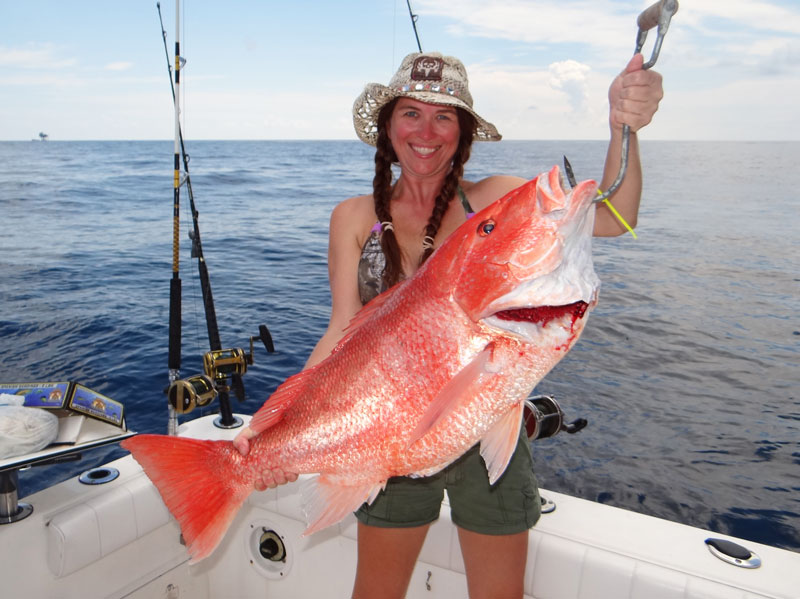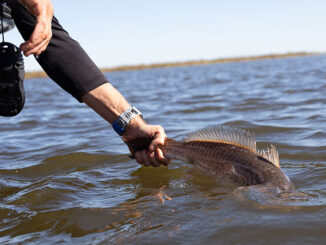
A 2018 scientific study indicates so
Without a doubt, the most contentious fisheries management issue in Louisiana today is about how red snappers are being managed. It began in the 1980s, when scientists monitoring the catches of recreational and commercial fishermen noticed a severe shortage of larger, older fish in their harvest.
Deeming the scarcity of older fish in catches to be the result of overfishing, the Gulf of Mexico Fisheries Management Council and the National Marine Fisheries Service began clamping down on harvest.
Between 1990 and 2008 the daily limit went from 7 fish to 2, where it is now. The minimum size was raised from 13 inches in 1990 to 15 inches in 1995 and then to 16 inches in 2000.
The federal waters open season steadily slid from 365 days a year as recently as 1996 to under 50 days in 2017. Even with the shortened seasons, recreational fishermen overfished their quota every year between 2007 and 2013 (except for 2010, the oil spill year).
Recreational fishermen were seeing more fish and catching more fish. On top of that, the average size fish they caught doubled in size between 2007 and 2013.
Yet scientists refused to budge. Their position is that the species was and is overfished!?
What gives?
Scientific management is only as good as its data. And there is part of the issue. The data collected that supported the conclusion of overfishing came from fishermen’s catches, not sampling of the population by biologists.

That data, called fisheries-dependent data, can be good by itself, but only if fishermen by habit or by being allowed by regulation to fish on all ages and sizes equal to their representation in the wild population.
If let’s say, older and larger fish are in places that few recreational people fish, few will be in the catch. Or if certain areas where older and larger red snappers concentrate are placed off limits to the only gear (such as bottom longlines, which were outlawed in 1990) that can catch them, few of them will show up in the commercial catch.
The lack of these older and larger fish in catches then may be incorrectly interpreted as a result of overfishing. Of course, overfishing may still be occurring as well. There just isn’t any proof that it is not.
Scientists can only solidly correct the flaws in fisheries-dependent data by gathering fisheries-independent data — doing the catching and counting themselves. Unfortunately, that kind of research is very expensive and time consuming. Thousands of recreational and commercial fishermen fish tens of thousands of days a year.
The number of biologists is limited and so are the dollars to send them out there with expensive sampling equipment. Fortunately it occurs. In a study published in late summer, 2018, scientists from the University of South Alabama conducted an extensive red snapper sampling project off their coast.
They sampled the Alabama Artificial Reef Zone (AARZ), an area delineated for the construction of public and private artificial reefs (there are thousands of them) and areas of normal bottom, without artificial reefs.
Do we only catch middle-aged fish?
Twice a year, each year for 5 years they sampled with shrimp trawls, ROVs (un-manned camera-equipped submarines), bandit gear (10-hook rigs fished on commercial snapper reels) and 100-hook bottom longlines.
The trawls were towed over open bottom to avoid snagging on natural or artificial reefs. The ROV’s were used to video both natural and artificial reefs and some open, non-reef bottoms.
Bandit rigs were most used to target artificial and natural reefs, as well as some open non-reef bottoms. Longlines were set anywhere, without regard to the presence or absence of reefs.
Captured fish were aged counting the growth rings in a cross-section of an otolith (ear bone) for each fish. What the researchers found was that red snappers definitely use different habitats during 3 phases of their life.
Young fish, from less than a year old to 2 years old, used open bottoms, away from all structure. Mud was preferred over sand and shell bottoms. These fish were 1 to 10 inches long.
By 8 inches long, some of them began to move to natural and artificial reefs. By 11 inches long, virtually all of them had moved from mud bottoms to reef areas. Some remained on reefs until they were 37 inches long and up to 8 years old.
Two- to 8-year red snappers were four times more abundant on artificial reefs than natural reefs and 27 times more abundant than open unstructured bottom. These reefs are where most fishing pressure on red snappers occurs today and it targets these middle-aged fish.
As red snappers aged they spent less and less time near reef structure and more time on open mud bottoms. These are the larger and older snappers, what fishermen call “sow snappers.” They were found at all depths sampled in the study, from 60 to 300 feet deep, but not near structure.
The big old fish scattered on open bottoms are very difficult for recreational and commercial fishermen to target and naturally are under-represented in their catches.

